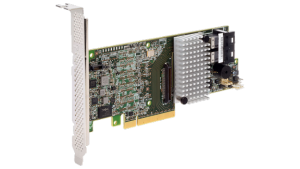I have been waiting for this, because I had previously read that version 3 would introduce (the dangerous) feature of write-back caching.
It is dangerous because if the server crashes or looses power and the writes in the cache have not been written to the disk you will have inconsistent data…. that’s bad.
So, lets do a few tests.
The Testing Environment
Here is the hardware setup of the server being used for the benchmark tests.
Motherboard: Supermicro
OS: Windows Server 2008 R2
Processor: Dual Intel Xeon L5420 @ 2.50 GHz
System RAM: 32 GB
Storage Controller: Intel ESB2 SATA RAID controller (driver 10.1.5.1001)
Spinning Disks: Seagate Laptop 1tb (ST1000LM014)
Spinning Disk Setup: RAID 10 (4 disks)
Cache Device: Kingston Digital HyperX Predator 240 GB PCIe Gen2 x4 Solid State Drive
FIRST TEST
Restore a 205gb MySQL database, that is a lot of writes to the disk. Lets see if the write cache makes any difference, in theory it should.
#1 – Cache off, source and destination on same disk: 6 hours 22 minutes
#2 – Cache on (write-back enabled), source and destination on same disk: 6 hours 30 minutes
#3 – Cache on (write-back enabled), source SMB network share: 7 hours 7 minutes
The hard drives in RAID 10 can write at less than 200 MB/sec and the cache device can write at more than 650 MB/sec —- yet the performance drops slightly? We should ideally be seeing a massive increase in performance.
How can the results actually be slower when using the cache?
SECOND TEST
Intel provides a tool called Intel IO Assessment Tool, you run it on your system and it will determine if your system can benefit from the cache and what files you should be caching.
The results say I could benefit and the files I should be caching are the MySQL data folder. No surprise since the server is strictly a MySQL server.
IOPS
Lets use Iometer to calculate how many IOPS this hardware setup can produce. The tests are conducted using the OpenPerformanceTest16.icf (16GB) config from http://vmktree.org/iometer/. The specific test used was RealLive-60%Rand-65%Read.
Kingston Digital HyperX Predator (systems cache drive)
I/Os per Second: 8,346
MBs per second: 68.38 MBPS
Average I/O Response Time: 5.25 ms
Seagate Laptop (RAID 10) – Intel CAS enabled: NO
I/Os per Second: 150
MBs per second: 1.23 MBPS
Average I/O Response Time: 350.20 ms
Seagate Laptop (RAID 10) – Intel CAS enabled: YES
I/Os per Second: 1424
MBs per second: 11.67
Average I/O Response Time: 34.22
This test shows that Intel CAS is working, with nearly a 9.5x improvement over going direct to the disk. Yet no measurable improvement in the performance of MySQL?
FINAL RESULTS
The results of all tests I have done with Intel CAS have been disappointing to say the least. The new version 3 has no options to set, so I can’t really be screwing anything up.
I am going to reach out to Intel and see if they can provide any insight as to why I am not seeing any benefit in my real life usage.

 It is February 2016. I am trying to find Windows drivers for an ‘antique’ Intel RIAD controller, the ESB2 SATA RAID card.
It is February 2016. I am trying to find Windows drivers for an ‘antique’ Intel RIAD controller, the ESB2 SATA RAID card.